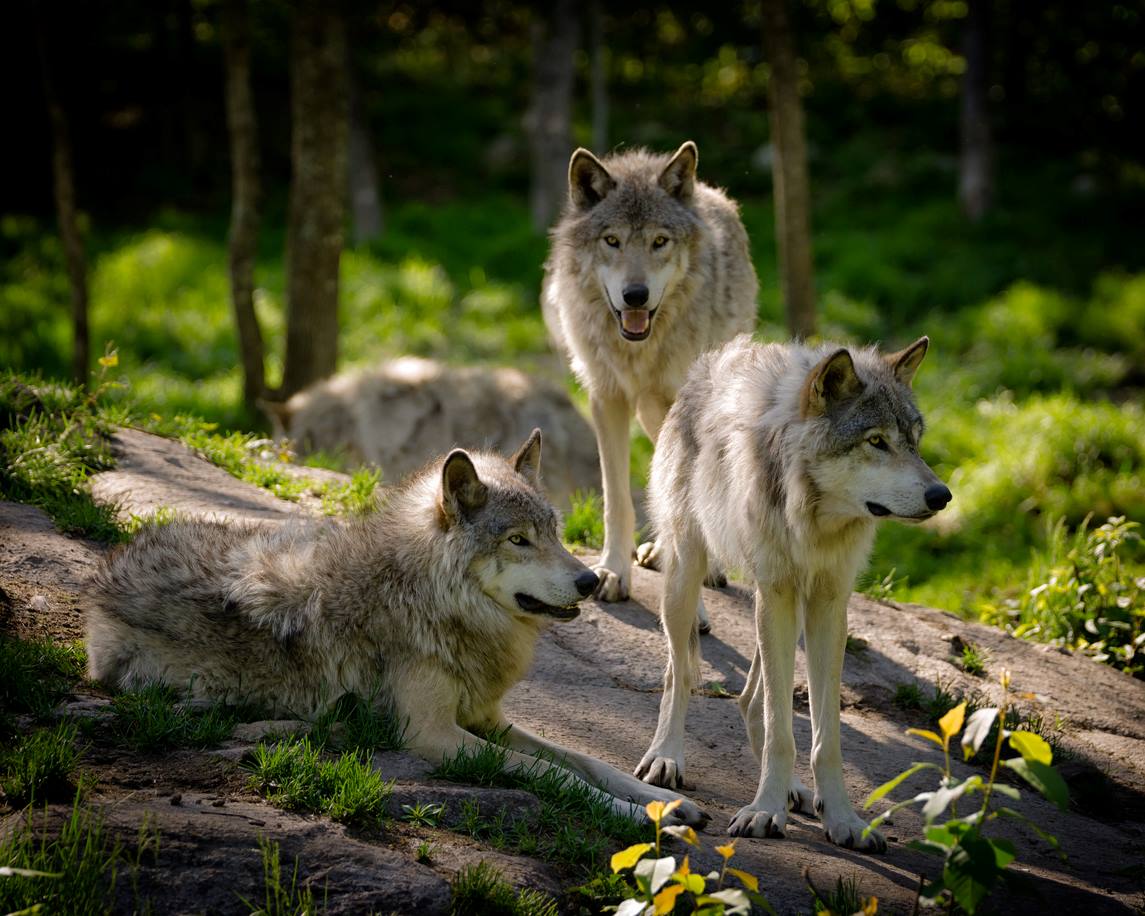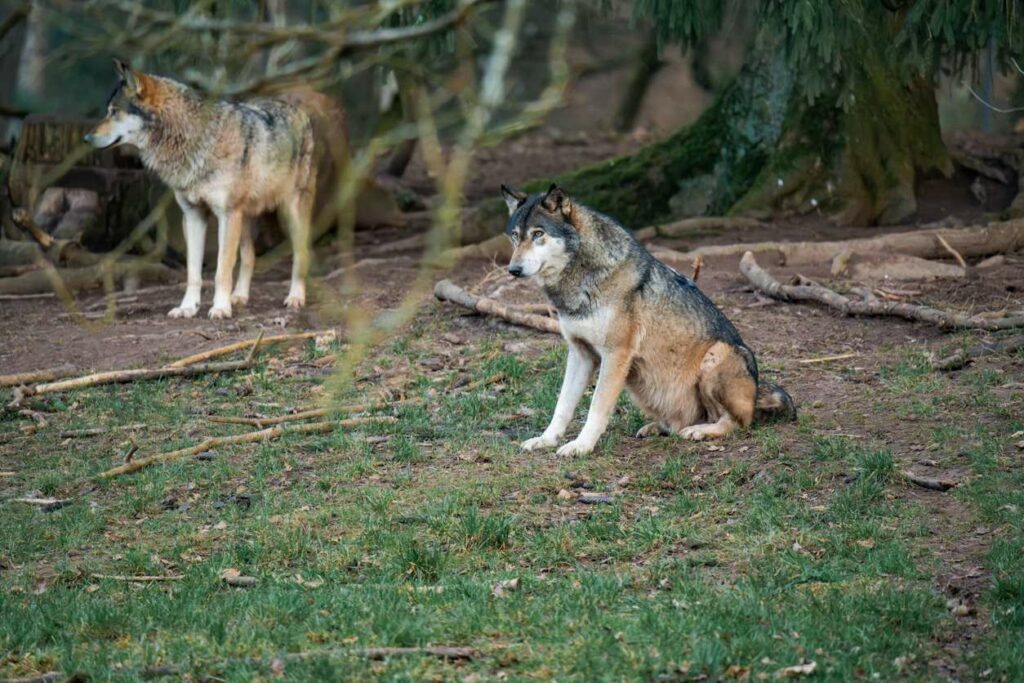Wolf Pack Hierarchy: Understanding Wolves’ Complex Dynamics

Wolves are complex and very social creatures dedicated to their family’s well-being. Only a handful of other species, like gorillas and dolphins, share similar social structures that start as soon as they are in adolescence. For campers, coming in contact with a wolf pack is much more likely than encountering other social animals.
With the correct information about how and where wolves live, you can deter the pack from your campsite without harming you or the wolves. Allow our Rjourney team to explore the hierarchy of wolf packs and show how these social structures are paramount to their survival and preservation.
Hierarchy of Wolf Packs
The strong social bonds of wolves are remarkable. Wolves tend to live in packs or families of between five and nine members, and each is part of a hierarchy with different ranks that serve a different purpose. Allow us to dive deeper into each significant role in a wolf pack’s hierarchy.
Alpha Wolf
A pair of alpha wolves are the acting leaders that dictate the rest of the pack. They also breed and produce the offspring for the rest of the pack. Alpha wolves make decisions for the rest of the pack, such as where to hunt and who else gets to eat. Alphas also are the ones who eat first.
Beta Wolf
Beta wolves are advisors to the pack’s alphas and are the next in command. Betas often maintain discipline throughout the rest of the pack, minus the alphas. If a wolf of a lower rank is not performing their role to the rest of the pack’s satisfaction, the beta will surely let the alpha know.
Delta Wolf

Often called the mid-ranking wolves, delta wolves traditionally survey the territory and their borders. Think of them as the pack’s watchmen. Deltas also care for the ill and wounded wolves from the hunts.
Omega Wolf
Omega wolves are the lowest rank of the pack and usually eat after all the other, more dominant wolves. Omegas follow the orders of all other higher-ranking wolves and often bear the brunt of any errors or faults of any hunts.
Wolves Babies
Wolf babies, often called pups, are the offspring of alpha wolves less than a year in age. Pups are often not given ranks at birth but are trained and assigned ranks when they’re old enough or when the alpha decides.
Types of Wolves
The wolf pack hierarchy structure is universal among all species of wolves. Here are some common wolf species found across North America to watch out for in your area or around your campsite:
- Gray wolf. The most prominent member of the wild dog family, gray wolves often travel in packs of up to 12 members.
- Eastern timber wolf. Smaller than the gray wolf, these wolves have reddish fur and travel in smaller-sized packs.
- Great Plains wolf. These wolves are found in the northern parts of the United States and once had the most extensive range of any North American gray wolf subspecies.
- Mexican gray wolf. This subspecies of the gray wolf has become an extremely endangered species.
Where Do Wolves Live?

Forests, mountains, and tundras are among the many vast landscapes that wolves live in. They often find a cave or a hole near boulders and trees, commonly known as a wolves’ den, to keep shelter. It’s also in these dens that pregnant females dig areas to give birth to their pups. These shelters are reusable and are passed on to new generations of the pack.
What Do Wolves Eat?
Constantly on the hunt for food, wolves are carnivores in search of large, hoofed herbivores to eat. Among the common prey for wolves include deer, moose, and elk. However, wolves also scavenge for meat left behind by scavengers like vultures.
How Do Wolves Communicate?
Communication is vital for the survival of a wolf pack and is portrayed in various ways. The most prominent communication between wolves is body language and facial expressions. For example, if a tail stands tall, that is a sign of dominance.
Wolves also use vocalizations like howls, whimpers, and yips. These sounds are equally crucial to body language in conveying emotions and signals. More often than not, wolves use body language and vocalizations to communicate their message.
How To Keep Wolves Away From Your Campsite
While conservation efforts have seen a rise in gray wolf populations in America, the risk of a potential encounter cannot be ignored. The correct information and tips can help keep your group and other campers knowledgeable about keeping the pack away. Let us share some practical ways to keep wolves and other wild animals away from your campsite without harming them.
- Keep your campsite clean
- Store food away properly
- Use noisemakers
- Bring repellents
- Research the area before your arrival
- Pick a good camping spot
Enjoy Camping at Rjourney
To enjoy the full benefits of camping, look no further than Rjourney. Across our premier RV resorts, you can enjoy designated campsites with on-site activities and amenities to immerse you and your loved ones in nature. Find your nearest Rjourney resort online or contact our team to book your stay today!
Did you enjoy this blog? You might also like to learn about foxes and their potential dangers.